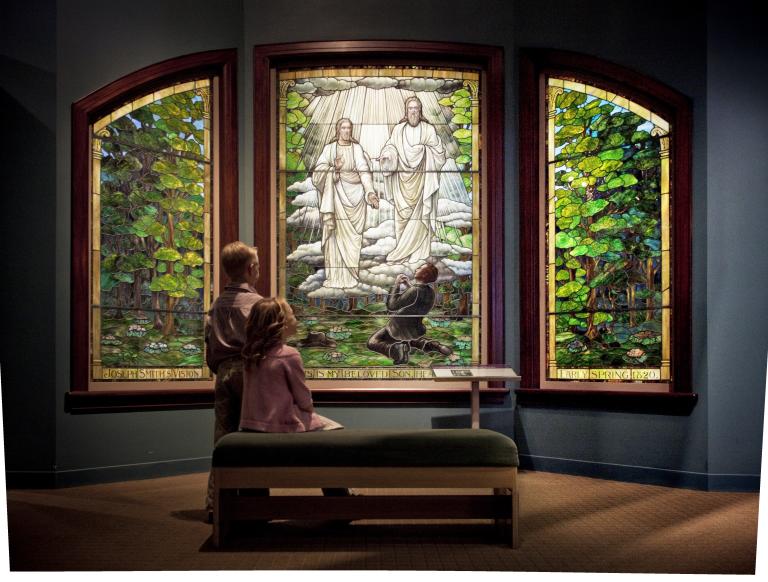
(LDS Media Library)
The first presentation of the morning — and, thus, the first of the conference as a whole — was that of Don Bradley, entitled “Joseph Smith’s First Vision as Endowment and Epitome of the Gospel of Jesus Christ (or Why I Came Back to the Church).” As anybody familiar with Don could have predicted, it was fresh and original, insightful, and informed by an intimate knowledge of early Latter-day Saint historical sources. It also began and ended with autobiographical reflections on his own return to belief: “No opportunist came up with a spiritual experience that epitomizes like no other the Gospel of Jesus Christ.”
Here are some of his leading thoughts, as I was able to catch them, but obviously without the richness of detail and the reasoning with which :
The First Vision was an endowment and an enactment — an encapsulization — of the Gospel. It not merely about the Gospel, but a revelation of the Gospel and of the plan of salvation. It
- was esoteric
- was an initiation
- was a blessing of the eyes
- was a lifting up or exaltation
- led to recovery of “white stone” and new name
- pointed to exaltation, becoming like God
Next, Angela Hallstrom, a writer and literary editor associated with the ongoing project to produce a four-volume history of the Church called Saints, addressed the topic of “Women’s Voices in Saints Volume 2.”
She spoke first about the decision to write Saints in narrative form, as a story, rather than in the more arid style (my description) of contemorary academic historiography. “Stories,” she said, “create community.” (I strongly agree. I think that this is why the scriptures themselves are largely in the form that they are, and that this is why Pioneer Day and handcart reenactments and visits to Church historical sites and other such things are so very important.)
She focused for several minutes on Emmeline Wells, a genuinely interesting and important character in late-nineteenth-century LDS history. But then she turned to three LDS women — Ida Hunt Udall, Emily Wells Grant, and Lorena Larsen — living “on the underground” owing to anti-polygamy persecutions. They were, at least in the specimens that Sister Hallstrom shared (and that will apparently appear in Saints 2), wonderfully attractive writers, treating both difficult and inspiring matters, and I’m very pleased that their voices will soon be much more audible.
She spoke of the need to “honor the struggle” of earlier saints, not only in such obvious arenas as pioneering in the wilderness but in such more difficult areas as plural marriage, and the like.
Posted from Provo, Utah










